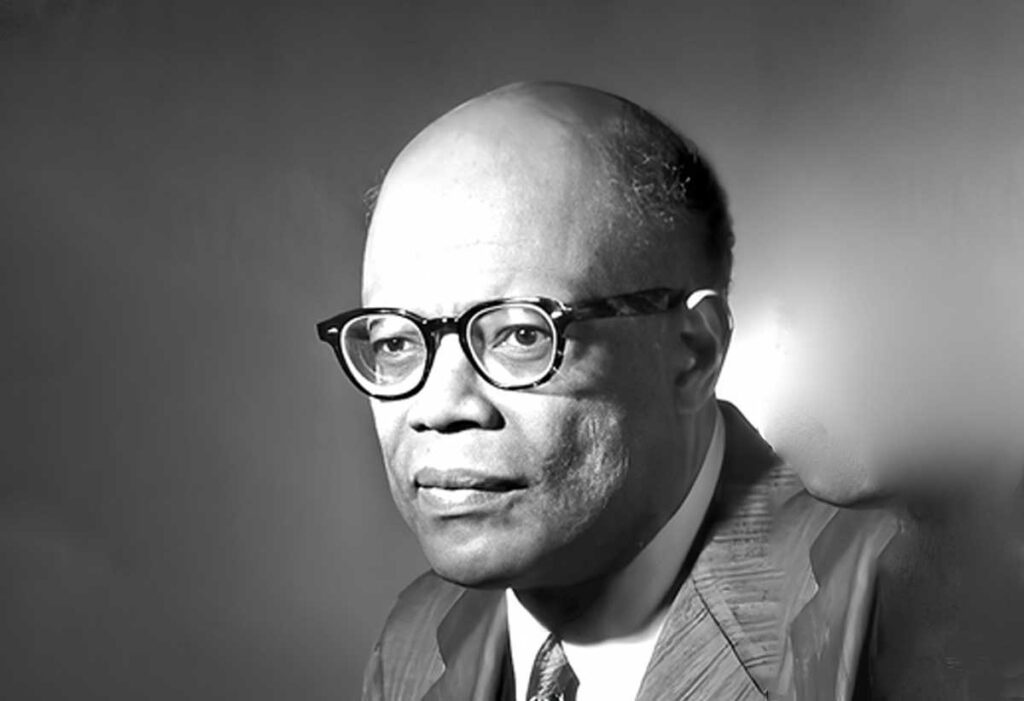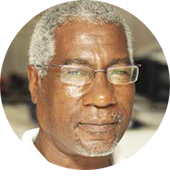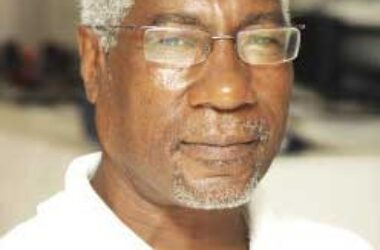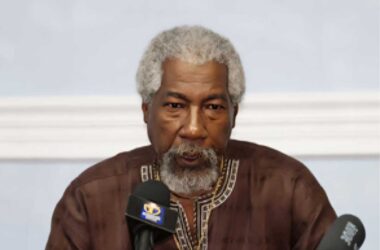

I knew it was coming, but when it did, the renaming of a London School of Economics (LSE) building after Sir Arthur Lewis still hit me like a blue tidal wave, or a virtual tsunami.
The news came on March 23 through an official LSE press release published online indicating it had “officially renamed” a building after “Nobel Prize-winning economist and LSE’s first black academic” Sir William Arthur Lewis, who’d studied, taught and researched at the school.
Formerly called 32L (32 Lincoln’s Inn Fields) it’s now the ‘Sir Arthur Lewis Building’ — and home to various LSE departments including the Centre for Economic Performance (CEP), the International Growth Centre (IGC), the Department of Economics, the Centre for Macroeconomics, and the Suntory and Toyota International Centres for Economics and Related Disciplines (STICERD).
At the March 23 official ceremony, LSE President and Vice Chancellor Minouche Shafik celebrated Sir Arthur Lewis’ “ongoing legacy” at the prestigious school and “the enduring contribution he has made to development economics.”
He said, “Sir Arthur Lewis was a pioneer in the field of development economics and an outstanding student, teacher and researcher at LSE. We are delighted to rename one of our buildings after him in recognition of his exemplary career and enduring legacy, both at LSE and beyond.”
Professor Sir Tim Besley from the Department of Economics added: “Nobody who studies issues in development can fail to appreciate Arthur Lewis’s legacy and his framing of development challenges as a process of structural change.
“We honour that legacy at LSE to this day with a dedicated cadre of economists who study development and growth issues.
“And we have many students from all over the world who come to the LSE study and research in development following in Arthur Lewis’s footsteps.”
Born in St Lucia in 1915, Sir Arthur won a government scholarship to study in Britain and in 1933 arrived at LSE, earning a First-Class degree four years later in 1937 and being awarded a scholarship to continue his studies, earning his PhD in Industrial Economics.
While at LSE, Sir Arthur was a member of staff from 1938 to 1948 and became a School Reader in Colonial Economics in 1947.
Sir Arthur was knighted in 1963 and for the next two decades (1963-1983) held a professorship at Princeton University, also becoming the first President of the Caribbean Development Bank (CDB).
In 1979, Sir Arthur was jointly awarded the Nobel Prize for Economics with US Economist Theodore Schultz for “pioneering research into economic development research with particular consideration of the problems of developing countries”.
Sir Arthur died in Bridgetown, Barbados, in 1991 and in 2015, to mark the centenary of his birth, a special Chair was established in his name at LSE.
Then in 2020, 19 years after his death, Sir Arthur’s template for Reparations for Britain’s West Indian (Caribbean) colonies, written 81 years earlier in 1939, was formally adopted on August 1 (Emancipation Day), 2020 as the blueprint for the Caribbean Community (CARICOM) in its quest for Reparations from the UK and Europe for Slavery and Native Genocide.
And three years later, LSE honoured Sir Arthur by renaming the building after him – 75 years after he left LSE and 66 years after he left the UK in 1957 for Africa, to advise the first Government of an independent Ghana.
‘Better late than never’ always sounds true and is usually applied to genii regarded as having predated their time because their works and/or words were both unprecedented and everlasting.
Much-ado about it all is Brian Walker, a Jamaica-based former LSE student, who’d earned a Chevening Scholarship in 2018 and his fascination with Sir Arthur led him to produce a widely-circulated documentary on the Nobel laureate.
The popular documentary would only be the start of bigger things to come, as Walker started wondering why the internationally-acknowledged bard didn’t seem to have had any pride of place at the place he made proud, made his name and built his fame.
Walker started thinking of how best to permanently inscribe Sir Arthur’s name at the university — and soon, with like-minded Caribbean and British students, lecturers and others interested in carving W. Arthur Lewis’ name in stone there agreed to propose that the building housing the LSE’s Department of Economics be renamed after the Nobel Prizewinner.
The London ceremony was attended by Saint Lucia’s High Commissioner Anthony Severin, Walker, members of the Lewis family, LSE top brass and some of those who worked hard and quietly in the background, of both Caribbean and UK heritage.
The family was represented by Sir Arthur’s older daughter Elizabeth Lewis-Channon and her husband Steven and by Sir Arthur’s grand-daughter Samantha Virgil and her husband Khari Motayne.
Also present was Professor Besley (an Arthur Lewis Professor of Development Economics), Dr Junius Oliver (a Saint Lucian academic in the LSE’s Department of Economics), Shey Forbes-Talor (who co-produced the documentary on Sir Arthur with Walker), Student Union Officer Martha Ojo (who co-signed the proposal Walker presented to LSE), Christina Ivey, a graduate student who helped lobby the university – and Walker.
“It was a magical moment,” Walker says of the event, recalling “the joy and gratitude from the patience that made the journey worth the while.”
He also noted that the presence of High Commissioner Severin “added to the significance of the moment.”
Walker said the event marked “a celebration of Sir Arthur’s contribution to LSE, the Caribbean and the whole wide world…”
But the intellectual author of the event, speaking from Jamaica after returning home from the seismic do in London, sounded bowled-over the-most by a tweet from a current Saint Lucian student at LSE.
Why? According to Walker, “Because she said the renaming and the ceremony motivated her push harder to ensure she earned her certificate, to be able to pose for a photo with it in front of the Sir Arthur Lewis Building.”
And that made more than just Brian’s day!











